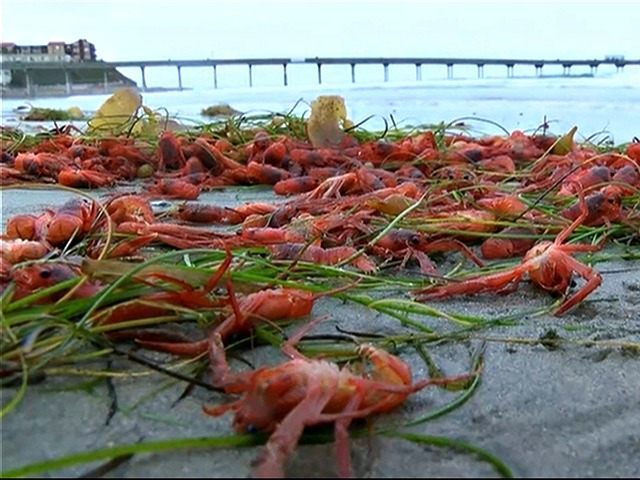With Los Angeles receiving small amounts of rain on three separate days last week, red crabs washing ashore in Orange County, and three simultaneous typhoons in the western Pacific Ocean in early July, El Niño (“little boy”) is beginning to crank up his mischief. According to the National Oceanic and Atmospheric Administration’s El Niño Portal, there is an 80 percent chance that the “weather anomaly” will last through spring 2016 and may rival the 1997-1998 episode that caused California billions of dollars in losses.
Easterly trade winds near the equator usually pile warm water into the western Pacific Ocean each year, causing an upwelling of deep and cold ocean water that keeps the eastern and central Pacific Ocean cooler. But during an El Niño, the trade winds weaken or even reverse from west to east. Warmer western Pacific water then sloshes back toward the central Pacific Ocean in what is known as an equatorial-trapped Kelvin wave. This trade wind reversal often sends huge moisture-concentrated thunderstorms hurtling toward the West Coast in a cycle that can last from six to 18 months.
The El Niño Portal reports that sea-surface temperature anomalies in the equatorial Pacific Ocean increased in June in. In addition, NOAA says that many computer models predict sea-surface temperature anomalies will continue to increase through the fall. Consequently, this year’s El Niño has a 90 percent chance of lasting through the winter, and an 80 percent chance of lasting into early spring 2016, according to the NOAA updated forecast released on Thursday evening.
The last El Niño of similar strength, from December 26 through January 3, 1997, brought over 20 inches of snow and rain in some locations in California. Hundreds of thousands of people were forced to evacuate, and the state suffered about $1.8 billion in damages.
The next winter brought another strong El Niño that included four weeks in February 1998 of nearly continuous storm flooding, mudslides, and agriculture disruptions. California’s average rainfall that month totaled 21.74 inches, breaking the all-time-record of 17.33 inches that had stood since 1867. A record 35 counties were declared federal disaster area, as the state suffered 17 storm-deaths and $550 million in damages.
Given the history of prior El Niño events, fall through winter in the US should be, wetter and cooler in the Southern U.S. from California to the Carolinas, and drier and warmer in Northern tier of states, including the Ohio Valley, Great Lakes, and Northern Rockies.
Because El Niños are associated with wind shear and dry air in the tropical Atlantic Basin, hurricane activity usually falls. Wind shear days in the Caribbean are already at a record high for early June through early July.
It has been 18 years since the world was hit with a strong El Niño, so very few countries are equipped for its considerable impact. Several nations on South America’s West Coast already declared that they expect heavy destruction from the strong El Niño. Peru in recent weeks declared an El Niño emergency, warning of flooding that could begin there this summer. Citigroup and the United Nations have warned that wheat and other food staple supplies are at risk because of expected fires across Australia, China and India.

COMMENTS
Please let us know if you're having issues with commenting.